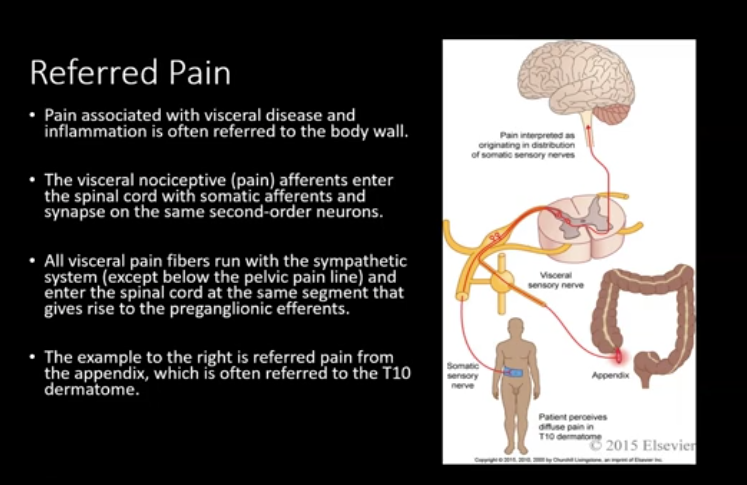Autonomic Nervous System
1/8
There's no tags or description
Looks like no tags are added yet.
Name | Mastery | Learn | Test | Matching | Spaced |
|---|
No study sessions yet.
9 Terms
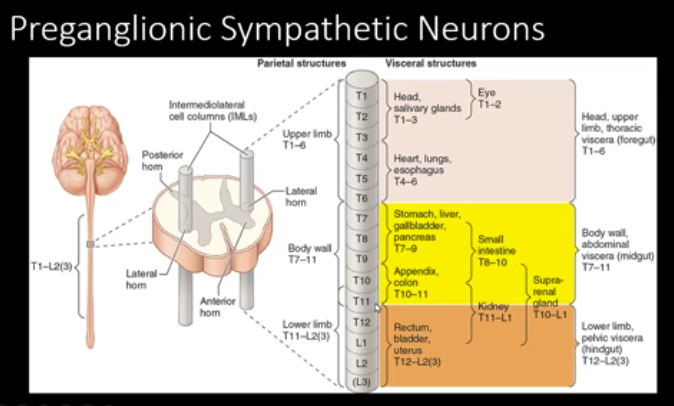
Sympathetic Nervous System
-also called the thoracolumbar system
-typically thought of as a motor (efferent) system with some sensory (afferent) components as well
-preganglionic neurons are in the intermediolateral cell column (a column of gray matter in the matter’s lateral horn) from T1-L1, L2 or L3 depending on the individual
-postganglionic neurons are in the sympathetic ganglia
there are paravertebral ganglia: located along the sympathetic chain of the vertebral column (trunk)
there are also prevertebral ganglia: located along the abdominal aorta
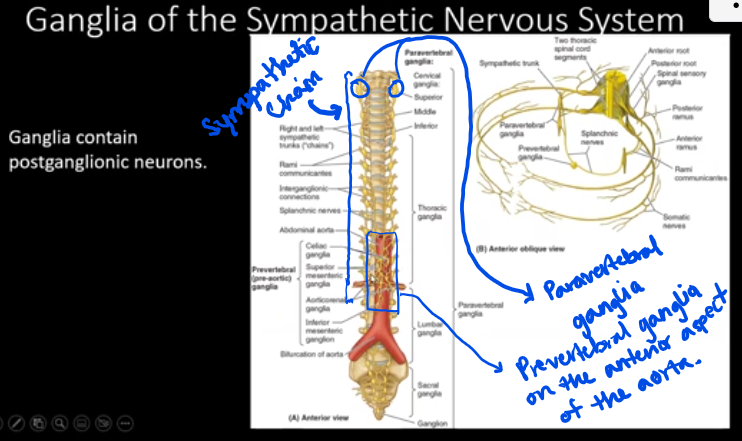
What Can Preganglionic Sympathetic Axons do Upon Leaving the Spinal Cord?
Ascend the sympathetic chain to synapse in a ganglion higher in the chain
synapse in the ganglion associated with the spinal segment from which they came
Descend and synapse on a ganglion lower in the chain
Exit the chain without synapsing and enter a splanchnic nerve to synapse on a prevertebral ganglion

Parietal (aka Somatic) Sympathetic Distribution
-post ganglionic sympathetic axons travel out and innervate:
blood vessels
arrector pili muscles (make your hair stand up)
and sweat glands
Visceral Sympathetic Distribution
-post-ganglionic sympathetic axons leave either the sympathetic chain ganglia or prevertebral (pre-aortic) ganglia to follow arteries to their visceral (organ) targets
Parasympathetic Nervous System
-also called craniosacral system
-has efferents and afferents, like the sympathetic system
-preganglionic neurons are in the nuclei of the brainstem or sacral spinal cord (S2-S4)
-postganglionic neurons are in ganglia in the head or associated with thoracic and abdominopelvic viscera
Four Cranial Nerves Have Preganglionic Parasympathetic Nuclei
-Oculomotor (III)- Edinger Westphal nucleus
axons travel out and innervate ciliary ganglia; post ganglionics from the ciliary ganglia will innervate constrictor pupillae muscle and ciliary muscles that allow the lens to thicken for near vision
-Facial (VII) - superior salivatory nucleus
axons leaving superior salivatory nucleus synapse with 2 different ganglia:
1. pterygopalatine ganglion which innervates the lacrimal gland
2. submandibular ganglion which innervates salivary glands
-Glossopharyngeal (IX) - inferior salivatory nucleus
axons leave inferior salivatory nucleus and synapse in the otic ganglion, postganglionics innervate the parotid gland
-Vagus (X) - dorsal motor nucleus
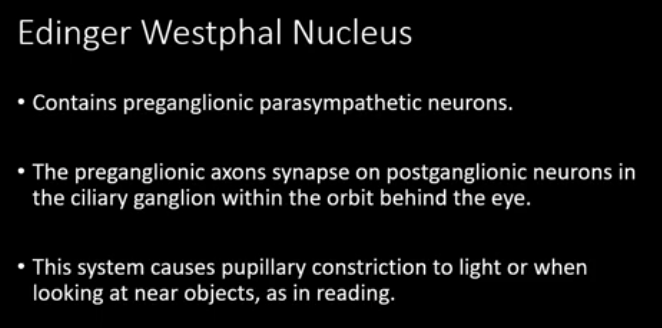
Injury to the Edinger Westphal Nucleus
-Edinger Westphal nucleus is located in the midbrain, part of the brainstem
*in this example the pupil is dilated due to the unopposed action of the sympathetics that innervate the dilator pupillae muscle
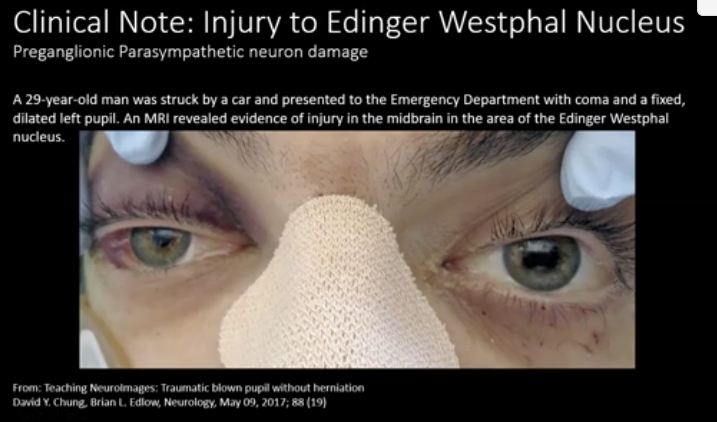
Enteric Nervous System (“Brain” of the Gut)
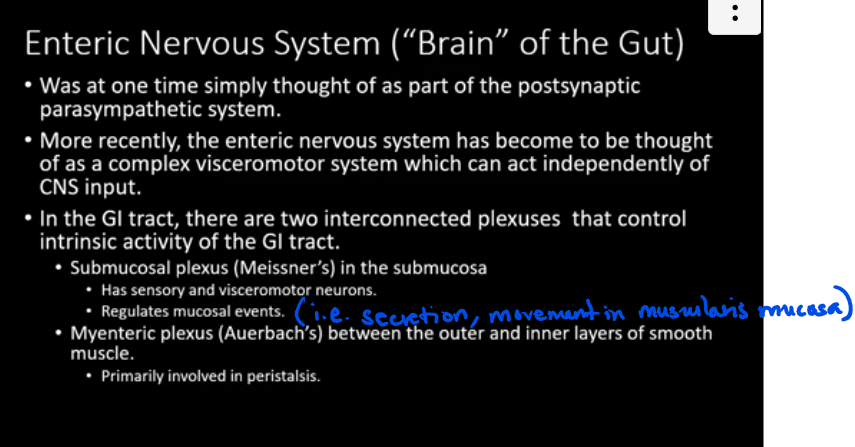
Visceral Sensation
-visceral afferents (sensory axons) carry sensory information from our viscera to our spinal cord
can be involved in visceral reflexes or sometimes viscerosomatic reflexes
-visceral sensations can be: distention, fullness, hunger, or satiety
-visceral pain is generally poorly localized and may be referred to the body wall and interpreted as somatic pain (this is called referred pain)
Ex. when you have ischemia of the heart, the pain can be referred to the left shoulder or medial aspect of the left upper limb and thus interpreted as arm pain rather than pain from the heart (the actual visceral pain)
